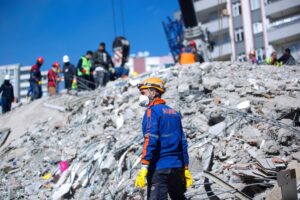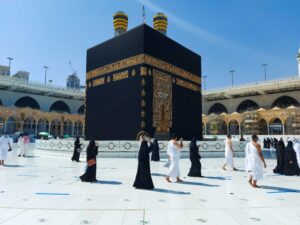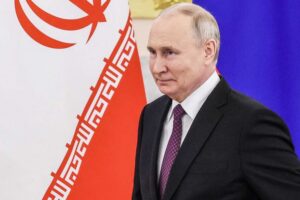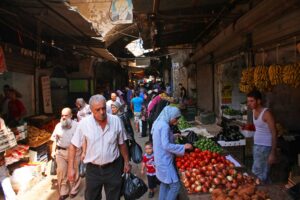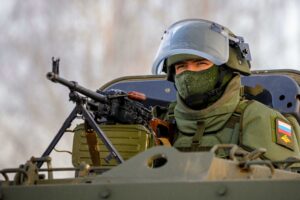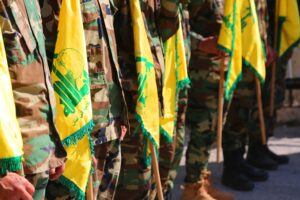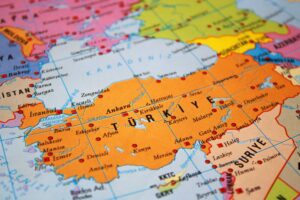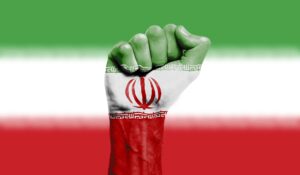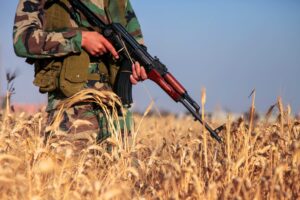The Syrian civil war, which commenced in March 2011, has unleashed an unprecedented humanitarian crisis, which resulted in the displacement of more than 14 million Syrians[i] internally and internationally, and directly contributed to the loss of more than 350,000 lives, as reported by the UN.[ii] The very political turmoil and domestic chaos the Bashar al-Assad government fuelled have, however, provided it with opportunities to work towards regaining some of the international recognition it had lost. The recent earthquake that struck north-western Syria and Turkey in early February serves as a compelling instance of the regime’s propensity to exploit disasters for its own gains. Such actions are reflective of a longstanding opportunistic strategy exemplified by the government’s handling of a series of events since the beginning of the civil war, including the destruction of the ancient historical site of Palmyra by ISIS in 2015[iii], its response to the COVID-19 pandemic in 2020, and its management of the aftermath of the earthquake, most recently.
Authoritarian Regimes and Opportunism
Regimes may capitalise on crises such as wars or natural disasters to bolster their power and expand their sphere of influence.
Authoritarian regimes employ a multifaceted strategy to consolidate their grip on power, which include controlling the flow of information, touting their own capabilities while blaming responsibility on others, and joining forces with other authoritarian countries.[iv] Opportunism forms a crucial component of this strategy, often facilitating the deployment of the abovementioned tools in unison. Opportunism, characterised by the readiness to exploit circumstances as they arise with little regard for ethical considerations or future consequences, can be a potent instrument in the hands of authoritarian governments. Specifically, such regimes may capitalise on crises such as wars or natural disasters to bolster their power and expand their sphere of influence. Such strategies are applied in the domestic as well as the international arenas. The provision of humanitarian assistance can serve as a convenient means to achieve this objective. Authoritarian governments may adeptly manipulate political divisions in foreign countries, utilising them as leverage to advance their immediate interests and augment the power of those friendly to their own agendas in the longer term.
According to a 2017 special report published by Freedom House[v], both Russia and China utilise opportunistic tactics to challenge democratic norms and promote authoritarian models of governance. They take advantage of political and economic crises and use propaganda and disinformation campaigns to undermine trust in democratic institutions, as the report highlights.[vi] The report also underscores an escalation in authoritarian internationalism, wherein prominent authoritarian powers establish coalitions that disseminate authoritarian practices. This trend is evident in Syria, where Russia[vii], China[viii], and Iran[ix] [x], among other countries, have all extended diplomatic support, loans, fuel, or direct military assistance to the regime on multiple occasions since 2011.
The Syrian regime’s response to the destruction of Palmyra
The destruction of Palmyra presented the regime with a unique opportunity for reputation rehabilitation.
In 2015, the ancient city of Palmyra, a UNESCO World Heritage site of significant cultural value, was captured by ISIS while its best-preserved temples were subsequently destroyed with the use of explosives.[xi] President Bashar al-Assad’s regime utilised this event to garner support for Syria’s counteroffensive and gain sympathy by emphasising the importance of Palmyra to world heritage. The regime framed the city’s destruction as a loss not only for Syria but for all of humanity, feeding into international outcries, some of which described the event as a war crime.[xii]
Even more importantly, the regime portrayed itself as a legitimate actor in the fight against ISIS as well as a source of stability and security in Syria and the region, more broadly speaking.[xiii] Russia was an important player in the battle to liberate Palmyra, spearheading Syria’s efforts at pushback against ISIS[xiv] and further emphasising the importance of the Syrian state in countering terrorism. This served the dual purpose of not only backing up Assad’s authoritarian regime, but also eroding US influence in the country.[xv] In the guise of historical preservation, Assad sought global recognition and assistance for its initiatives to reconstruct Palmyra, having invited foreign archaeologists[xvi] to Syria. The destruction of Palmyra presented the regime with a unique opportunity for reputation rehabilitation all the while consolidating its power in the affected areas.
Political Opportunism during the COVID-19 Pandemic
Emphasizing its mitigation measures, the regime was able to divert some public attention away from its role in the conflict.
A significant manifestation of the regime’s strategy of opportunism was its use of the COVID-19 pandemic as a means to distract attention from the ongoing conflict in Syria and to consolidate its own power. While emphasizing its mitigation measures, the regime was able to divert some public attention away from its role in the conflict and decrease scrutiny of its actions that continued to target the population during the healthcare emergency.[xvii] Crucially, Assad was also able to divert aid[xviii], favouring areas of Syria loyal to his regime at the expense of parts of the country that were formerly under opposition rule. The distorted exchange rate used by aid agencies has also allowed for the diversion of funds, increasing the Syrian Central Bank’s—and the Assad regime’s—foreign currency reserves.[xix] Assad also used the government’s response to the pandemic to install spyware on citizens’ mobile phones and further restrict people’s opportunities for mobilisation.[xx]
Another way in which the regime attempted to exploit the pandemic was by using it to remove Western sanctions imposed on Syria. While it failed to succeed in this endeavour, the government was able to secure additional medical aid deliveries from countries such as China[xxi], deepening its cooperation with yet another authoritarian power.
The Strategic Use of the Earthquake
The Syrian government astutely leveraged the earthquake that struck north-western Syria and Turkey in early February as an opportunity to bring to fruition its longstanding attempts to regain recognition by Arab nations.[xxii] Simultaneously, the earthquake also provided the regime with an opportunity to continue their efforts at consolidating and centralising their power in Syria.
The Assad regime's response to the recent earthquake might be interpreted as a successful end to over a decade of authoritarian opportunism.
Through a coordinated public relations campaign[xxiii], the government described to the international community a disaster much larger in size than what some assessed was realistic.[xxiv] In parallel with this, previous practices of providing assistance to certain regions of Syria on a selective basis informed by loyalty to the regime and diverting aid[xxv] at large have resumed in earnest after the earthquake. Furthermore, Assad restricted access to Syria’s opposition-held north-western areas primarily affected by the quake for more than a week.[xxvi]
The beginning of the normalisation process between the Assad regime and other Arab states of the Middle East precedes the earthquake as Oman never severed ties with Syria, and the UAE[xxvii] and Bahrain[xxviii] led the process to reopen their embassies in 2018. Arab leaders have, of course, had their own motives in supporting this process.[xxix] The natural disaster has, however, undoubtedly contributed to the fact that a growing group of Arab countries in the region traditionally opposed to Assad, have jumped on the bandwagon in a procession quicker than expected. On 7th May, member states reached a decision to readmit Syria into the Arab League[xxx] more than 11 years after it was expelled in the wake of its actions during the civil war.
In conclusion, the Assad regime’s response to the recent earthquake might be interpreted as a successful end to over a decade of authoritarian opportunism. The government has established a pattern of capitalizing on disasters, whether natural or man-made, to further its own interests. Although the long-term effectiveness of this strategy in consolidating the regime’s political stability remains uncertain, it is clear that the Syrian government has landed a major win in its quest to exploit crises in order to achieve its political objectives of recognition.
[i] UNHCR. (2023). Syria Refugee Crisis Explained. Retrieved from https://www.unrefugees.org/news/syria-refugee-crisis-explained/.
[ii] United Nations OHCHR. (2022). Presentation of the report on civilian deaths in the Syrian Arab Republic. Retrieved from https://www.ohchr.org/en/statements/2022/06/presentation-report-civilian-deaths-syrian-arab-republic.
[iii] Mullen, J. and Elwazer, S. (2015). ISIS destroys Arch of Triumph in Syria’s Palmyra ruins. CNN. Retrieved from https://edition.cnn.com/2015/10/05/middleeast/syria-isis-palmyra-arch-of-triumph/index.html
[iv] The Seven Habits of Highly Effective Autocrats: Key Strategies That Beat Down the Arab Spring and Keep Regimes in Power (arabcenterdc.org).
[v] Breaking Down Democracy, special report (Washington, DC: Freedom House, 2017), accessed March 31, 2023, https://freedomhouse.org/report/special-report/2017/breaking-down-democracy.
[vi] Breaking Down Democracy,” special report (Washington, DC: Freedom House, 2017), accessed March 31, 2023, https://freedomhouse.org/report/special-report/2017/breaking-down-democracy.
[vii] Charap, S., Treyger, E. and Geist E. (2019). Understanding Russia’s Intervention in Syria. Rand Corporation. Retrieved from https://www.rand.org/pubs/research_reports/RR3180.html.
[viii] Cafiero, G. (2020). China plays the long game on Syria. Middle East Institute. Retrieved from https://www.mei.edu/publications/china-plays-long-game-syria.
[ix] Bassiri Tabiriz, Dr A., Pantucci, R. Lain, S., Sutyagin, Dr I., Ansari, A., Stephens, M. and Joshi, S. (2016). Understanding Iran’s Role in the Syrian Conflict. RUSI. Retrieved from https://rusi.org/explore-our-research/publications/occasional-papers/understanding-irans-role-syrian-conflict.
[x] Shaar, K. and Fatholla-Nejad, A. (2020). Iran’s credit line to Syria: A well that never runs dry. Atlantic Council. Retrieved from https://www.atlanticcouncil.org/blogs/iransource/irans-credit-line-to-syria-a-well-that-never-runs-dry/.
[xi] Curry, A. (2017). Ancient Sites Damaged and Destroyed by ISIS. National Geographic. Retrieved from https://www.nationalgeographic.co.uk/history-and-civilisation/2017/11/ancient-sites-damaged-and-destroyed-by-isis.
[xii] Shaheen, K. (2015). Palmyra: destruction of ancient temple is a war crime, says Unesco chief. The Guardian. Retrieved from https://www.theguardian.com/world/2015/aug/24/palmyra-destruction-ancient-temple-baal-shamin-war-crime-un-isis.
[xiii] Emma Crichton-Miller, “How the Syrian Regime Is Using Ancient Palmyra as a Rebranding Tool,” Frieze, May 2, 2019, accessed March 31, 2023, https://www.frieze.com/article/how-syrian-regime-using-ancient-palmyra-rebranding-tool.
[xiv] Shaheen, K. (2016). Assad hails Syrian regime’s capture of Palmyra from Isis. The Guardian. Retrieved from https://www.theguardian.com/world/2016/mar/27/syrian-regime-forces-retake-all-of-palmyra-from-isis.
[xv] Borshchevskaya, A., (2020). The Russian Way of War in Syria: Threat Perception and Approaches to Counterterrorism. In Hamilton, R.E., Miller, C. and Stein, A. (eds), Russia’s War in Syria: Assessing Russian Military Capabilities and Lessons Learned. Retrieved from 352 (washingtoninstitute.org).
[xvi] Ensor, J. (2018). Syrian archeologists begin restoring Palmyra artefacts destroyed by Isil. The Telegraph. Retrieved from https://www.telegraph.co.uk/news/2018/07/09/syrian-archaeologists-begin-restoring-palmyra-artefacts-destroyed/.
[xvii] Assad’s Model” of Fighting COVID19: Forget Syrian Lives, Use the Crisis to Annul Economic Sanctions. (2020, May 12). Medium. Retrieved from https://medium.com/@SACD/assads-model-of-fighting-covid19-forget-syrian-lives-use-the-crisis-to-annul-economic-a729d003ca3
[xviii] Hall, N., Shaar, K. and Othman Agha, M. (2021). How the Assad Regime Systematically Diversts Tens of Millions of Aid. Center for Strategic & International Studies. Retrieved from https://www.csis.org/analysis/how-assad-regime-systematically-diverts-tens-millions-aid.
[xix] Ibid.
[xx] Gavlak, D. (2020). Assad Exploiting COVID-19 Prevention Measures to Consolidate Grip on Syria. VOA News. Retrieved from https://www.voanews.com/a/middle-east_assad-exploiting-covid-19-prevention-measures-consolidate-grip-syria-observers-say/6189477.html.
[xxi] Akil, S. and Shaar, K. (2021). The Red Dragon in the Land of Jasmine: An Overview of China’s Role in the Syrian Conflict. Operations & Policy Center. Retrieved from https://opc.center/an-overview-of-chinas-role-in-the-syrian-conflict/.
[xxii] The Soufan Center. “IntelBrief: The Syrian Regime’s Response to the Earthquake.” The Soufan Center, 2 March 2023, https://thesoufancenter.org/intelbrief-2023-march-2/.
[xxiii] Faucon, B. and Said, S. (2023). Arab Nations Seek to Bring Syria In From the Cold Amid Broad Middle East Realignment. The Wall Street Journal. Retrieved from https://www.wsj.com/articles/arab-nations-seek-to-bring-syria-in-from-the-cold-amid-broad-middle-east-realignment-32858d55.
[xxiv] Etana (2023). Brief: Assad Leveraging Earthquake Response. Retrieved from https://etanasyria.org/brief-assad-leveraging-earthquake-response/.
[xxv] Amnesty International. (2023). Syria: government forces and Turkey-backed armed groups have diverted earthquake aid. Retrieved from https://www.amnesty.org.uk/press-releases/syria-government-forces-and-turkey-backed-armed-groups-have-diverted-earthquake-aid.
[xxvi] Human Rights Watch. (2023). Northwest Syria: Aid Delays Deadly for Quake Survivors. Retrieved from https://www.hrw.org/news/2023/02/15/northwest-syria-aid-delays-deadly-quake-survivors.
[xxvii] Reuters (2018). UAE reopens embassy in boost for Assad. Retrieved from https://www.reuters.com/article/us-mideast-crisis-syria-emirates-idUSKCN1OQ0QV.
[xxviii] Daily Sabah. (2021). Bahrain appoints first ambassador to Syria since 2011 civil war. Retrieved from https://www.dailysabah.com/world/mid-east/bahrain-appoints-first-ambassador-to-syria-since-2011-civil-war.
[xxix] Aftandilian, G. (2023). Arab States Are Normalizing with Syria’s Assad Regime. Arab Center Washington DC. Retrieved from https://arabcenterdc.org/resource/arab-states-are-normalizing-with-syrias-assad-regime/.
[xxx] Armstrong, K. (2023). Arab League: Syria reinstated as Assad rehabilitation continues. BBC News. Retrieved from https://www.bbc.co.uk/news/world-middle-east-65519288.



